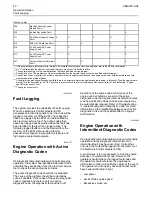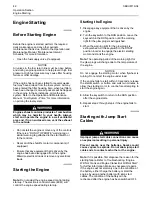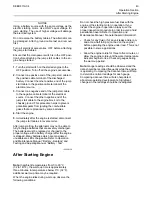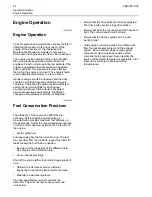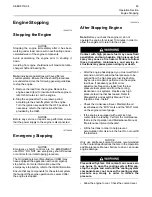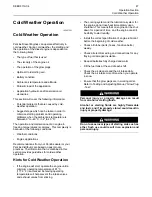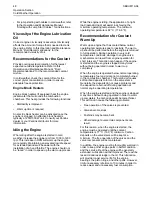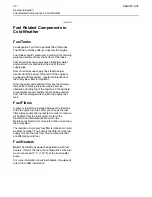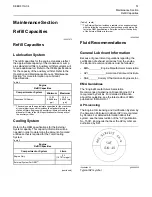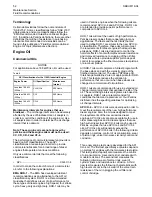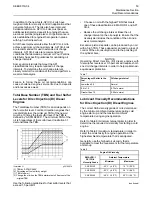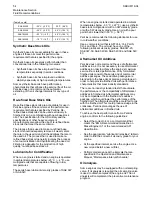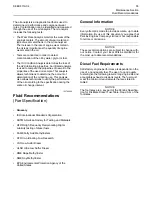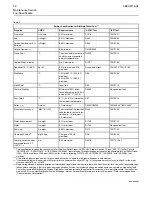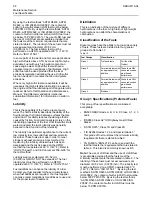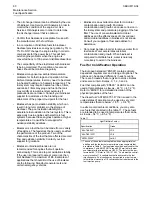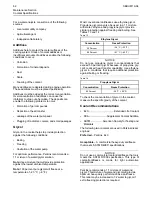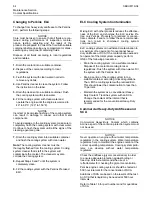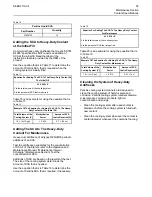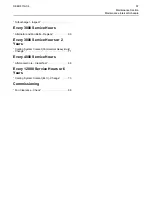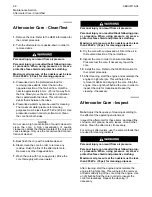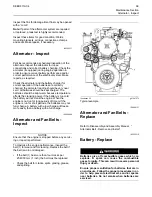
(Table 8, contd)
SAE 5W30
−30 °C (−22 °F)
30 °C (86 °F)
SAE 5W40
−30 °C (−22 °F)
40 °C (104 °F)
SAE 10W30
−20 °C (−4 °F)
40 °C (104 °F)
SAE 15W40
−10 °C (14 °F)
50 °C (122 °F)
Synthetic Base Stock Oils
Synthetic base oils are acceptable for use in these
engines if these oils meet the performance
requirements that are specified for the engine.
Synthetic base oils generally perform better than
conventional oils in the following two areas:
• Synthetic base oils have improved flow at low
temperatures especially in arctic conditions.
• Synthetic base oils have improved oxidation
stability especially at high operating temperatures.
Some synthetic base oils have performance
characteristics that enhance the service life of the oil.
Perkins does not recommend the automatic
extending of the oil change intervals for any type of
oil.
Re-refined Base Stock Oils
Re-refined base stock oils are acceptable for use in
Perkins engines if these oils meet the performance
requirements that are specified by Perkins. Re-
refined base stock oils can be used exclusively in
finished oil or in a combination with new base stock
oils. The specification for the US military and the
specifications of other heavy equipment
manufacturers also allow the use of re-refined base
stock oils that meet the same criteria.
The process that is used to make re-refined base
stock oil should adequately remove all wear metals
that are in the used oil and all the additives that are in
the used oil. The process that is used to make re-
refined base stock oil generally involves the process
of vacuum distillation and hydrotreating the used oil.
Filtering is adequate for the production of high
quality, re-refined base stock oil.
Lubricants for Cold Weather
When an engine is started and an engine is operated
in ambient temperatures below −20 °C (−4 °F), use
multigrade oils that are capable of flowing in low
temperatures.
These oils have lubricant viscosity grades of SAE 0W
or SAE 5W.
When an engine is started and operated in ambient
temperatures below −30 °C (−22 °F), use a synthetic
base stock multigrade oil with an 0W viscosity grade
or with a 5W viscosity grade. Use an oil with a pour
point that is lower than −50 °C (−58 °F).
Perkins recommends the following lubricants for use
in cold weather conditions:
Use a commercial oil that is API:CI-4, CI-4 PLUS,
CH-4 and CG-4. The oil must have one of the
following lubricant viscosity grades: SAE 0W-20,
SAE 0W-30, SAE 0W-40, SAE 5W-30 and SAE 5W-
40
Aftermarket Oil Additives
Perkins does not recommend the use of aftermarket
additives in oil. It is not necessary to use aftermarket
additives in order to achieve the engine's maximum
service life or rated performance. Fully formulated,
finished oils consist of base oils and of commercial
additive packages. These additive packages are
blended into the base oils at precise percentages in
order to help provide finished oils with performance
characteristics that meet industry standards.
There are no industry standard tests that evaluate
the performance or the compatibility of aftermarket
additives in finished oil. Aftermarket additives may
not be compatible with the finished oil's additive
package, which could lower the performance of the
finished oil. The aftermarket additive could fail to mix
with the finished oil. This could produce sludge in the
crankcase. Perkins discourages the use of
aftermarket additives in finished oils.
To achieve the best performance from a Perkins
engine, conform to the following guidelines:
• Select the correct oil, or a commercial oil that
meets the “EMA Recommended Guideline on
Diesel Engine Oil” or the recommended API
classification.
• See the appropriate “Lubricant Viscosities” table in
order to find the correct oil viscosity grade for your
engine.
• At the specified interval, service the engine. Use
new oil and install a new oil filter.
• Perform maintenance at the intervals that are
specified in the Operation and Maintenance
Manual, “Maintenance Interval Schedule”.
Oil analysis
Some engines may be equipped with an oil sampling
valve. If oil analysis is required the oil sampling valve
is used to obtain samples of the engine oil. The oil
analysis will complement the preventive maintenance
program.
54
SEBU8119-04

